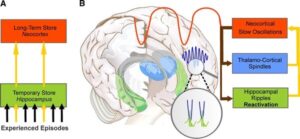
Forests are not just collections of individual trees growing side by side. Beneath the soil lies a complex communication system known as the Wood Wide Web. This underground network connects roots through a symbiotic relationship with fungi called mycorrhiza. Through these fungal threads, trees share nutrients, send warning signals, and support younger or dying plants.
Unlike ordinary fungi, mycorrhiza act like biological fiber optic cables. They transport carbon, nitrogen, water and chemical signals from one tree to another. This allows forests to function like interconnected communities rather than isolated organisms.
How the Wood Wide Web Works
Tree roots form associations with microscopic fungal hyphae. These hyphae extend far beyond where roots normally reach, expanding access to water and minerals. In return, trees supply the fungi with sugar produced through photosynthesis. Both sides benefit: trees grow stronger and fungi receive essential energy.
This network allows trees to detect environmental stress, such as insect attacks or drought conditions. When a tree is under threat, it releases defensive chemicals into the network, warning neighboring trees to activate protective responses.
Mother Trees and Resource Sharing
In many forests, larger and older trees act as central hubs. These are known as mother trees. They distribute nutrients to seedlings that receive little sunlight due to canopy shade. Research shows that removing mother trees can harm the entire forest ecosystem because young trees lose their primary source of support.
Why Tree Communication Matters
- Encourages balanced nutrient distribution
- Strengthens overall forest resilience
- Supports regeneration after fires or logging
- Protects young trees during growth stages
- Helps forests adapt to climate change
Debunking Myths About Talking Trees
Although it may sound like trees “talk”, communication does not happen through language or sound. Instead, it relies on chemical signaling, shared energy resources, and mutual defense responses. The Wood Wide Web is biological communication, not conscious intention.
The Wood Wide Web proves that forests behave like interconnected organisms rather than isolated plants. Understanding this hidden communication system can transform how we approach forest conservation, climate policy and ecosystem restoration. Healthy forests depend not only on planting new trees but also on preserving underground networks that keep them alive.



